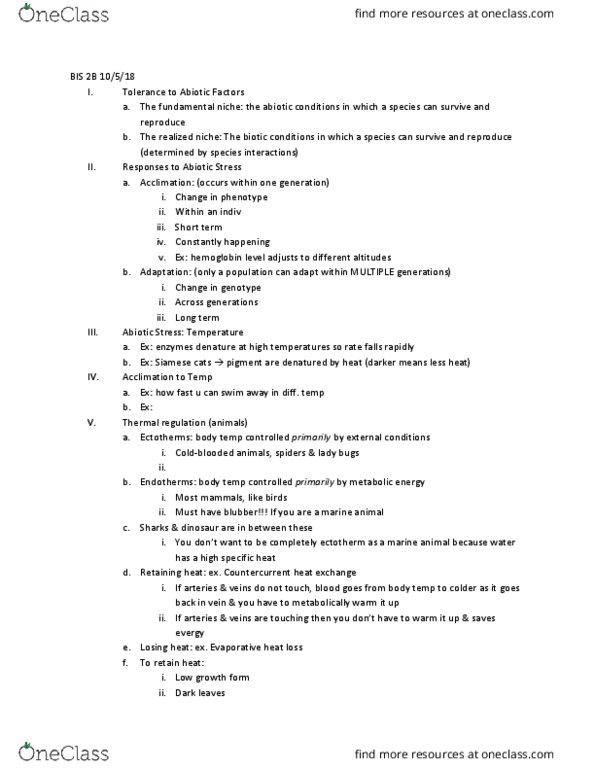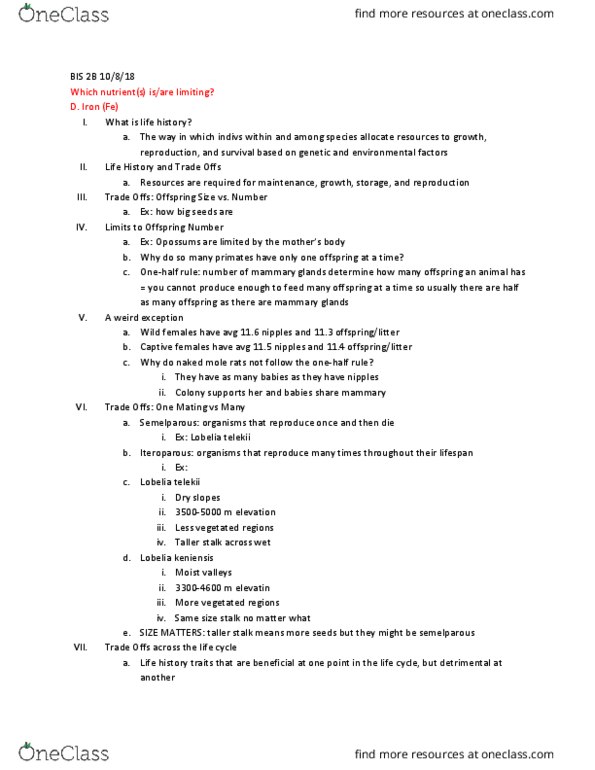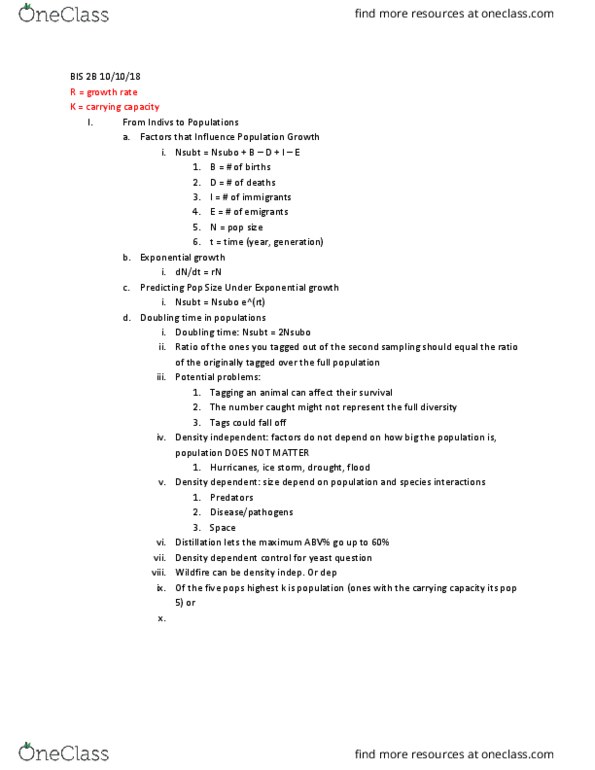BIS 2B Lecture Notes - Lecture 6: Lobelia Telekii, Semelparity And Iteroparity, Parental Investment
BIS 2B verified notes
6/11View all
Document Summary
Which nutrient(s) is/are limiting: iron (fe, what is life history, the way in which indivs within and among species allocate resources to growth, reproduction, and survival based on genetic and environmental factors. Life history and trade offs: resources are required for maintenance, growth, storage, and reproduction. Limits to offspring number: e(cid:454): opossu(cid:373)s are li(cid:373)ited b(cid:455) the (cid:373)other"s bod(cid:455, why do so many primates have only one offspring at a time, one-half rule: number of mammary glands determine how many offspring an animal has. = you cannot produce enough to feed many offspring at a time so usually there are half as many offspring as there are mammary glands. Trade offs: one mating vs many: semelparous: organisms that reproduce once and then die, ex: lobelia telekii. Patterns in life history traits: r selected, small body size, short life expectancy, rapid growth, early reproduction, produce many small offspring, little or no parental care, unpredictable or variable environments, boom//bust population growth ix.




